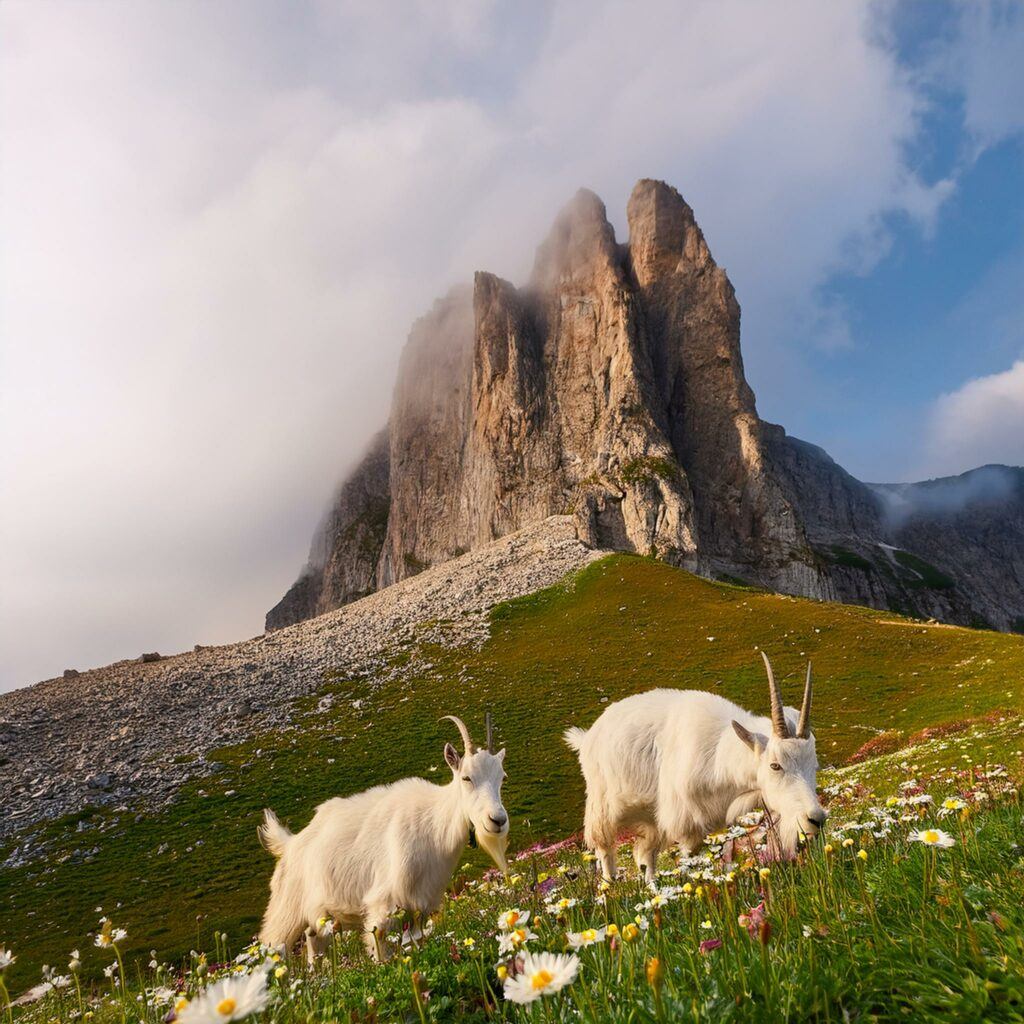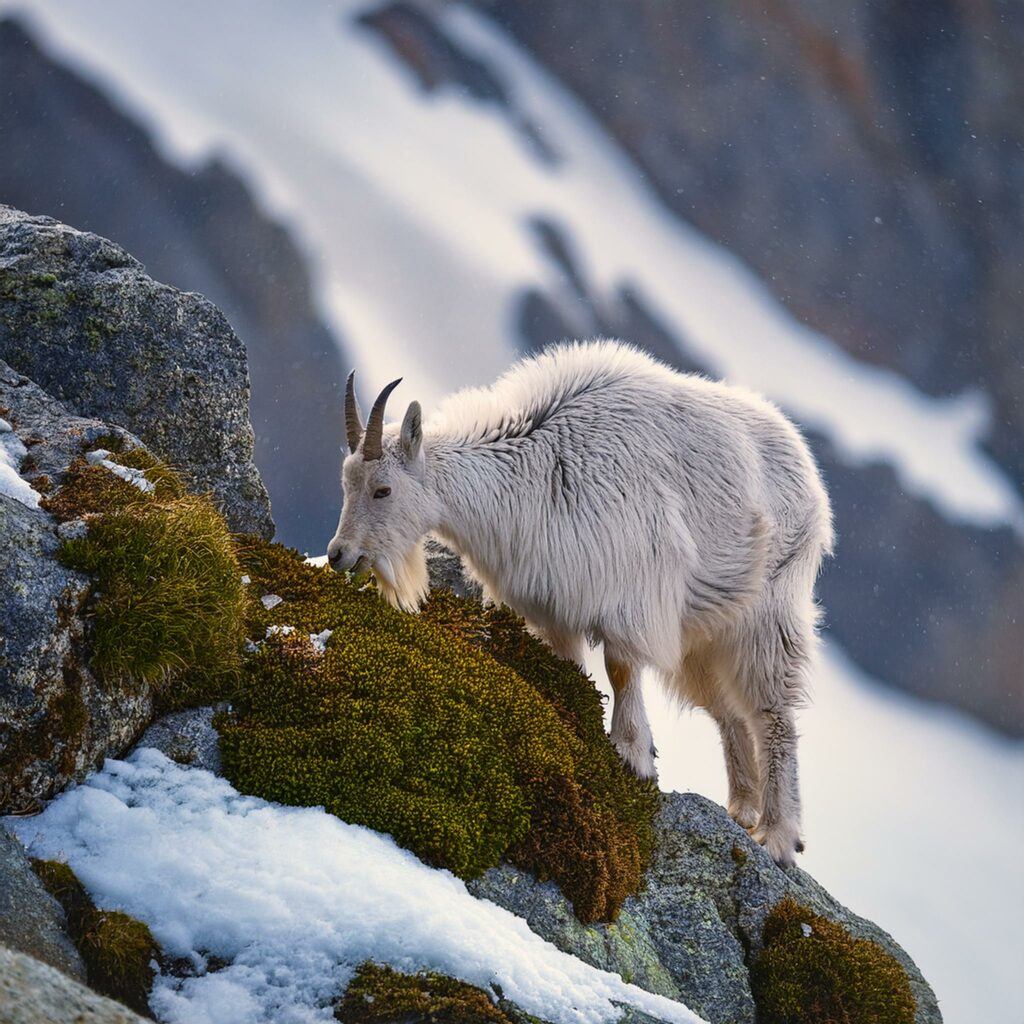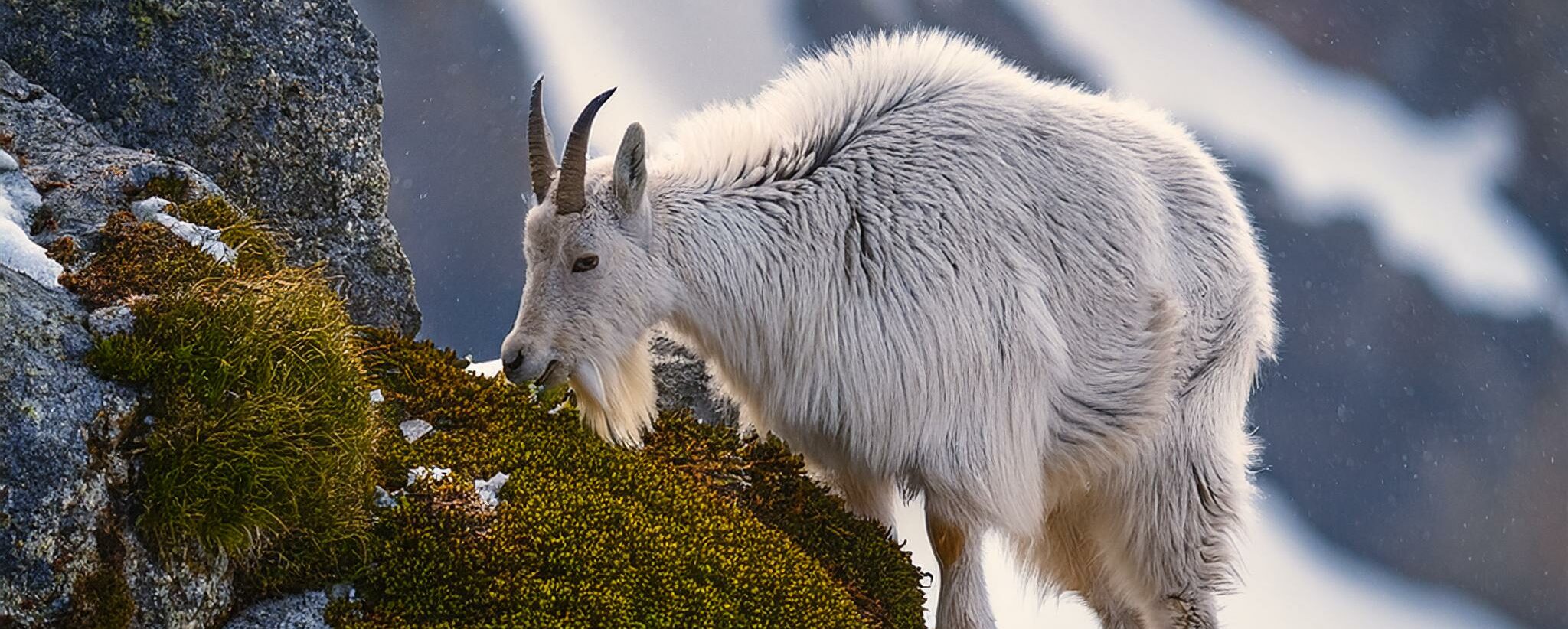Diet of Mountain Goats: Nature’s Alpine Grazers
An Exploration of the Eating Habits of Mountain Goats
The mountain goat (Oreamnos americanus), a magnificent creature known for its agility and grace on steep and rugged terrains, has a diet as diverse and interesting as its habitat. Residing primarily in the alpine and subalpine regions of North America, these herbivores have adapted to thrive in environments where food sources can be sparse and seasonal. Understanding what mountain goats eat provides insights into their survival strategies, ecological roles, and the delicate balance of their mountainous ecosystems.
Primary Food Sources
Mountain goats are primarily herbivores, with a diet that consists of a variety of plant materials. Their primary food sources include grasses, woody plants, and flowering plants. The specific types of vegetation they consume can vary depending on the season and the availability of food in their high-altitude habitats.
Grasses
Grasses form a significant part of the mountain goat’s diet. During the warmer months, when the alpine meadows are lush and green, mountain goats graze on a variety of grass species. These grasses not only provide essential nutrients but also help the goats maintain their energy levels, which is crucial for their demanding lifestyle.
Woody Plants
In addition to grasses, mountain goats consume a variety of woody plants. Shrubs, bushes, and even small trees are often browsed upon. The leaves, bark, and twigs of these plants offer a different set of nutrients that complement the goats’ dietary needs. During winter, when snow covers the ground and grasses are scarce, woody plants become particularly important.
Flowering Plants

Flowering plants, including forbs and herbs, are another key component of the mountain goat’s diet. These plants, often found in alpine meadows and rocky outcrops, provide a rich source of vitamins and minerals. Mountain goats display a preference for certain flowering plants, which they seek out during their foraging activities.
Seasonal Variations in Diet
The diet of mountain goats changes with the seasons, reflecting the availability of different food sources throughout the year.
Spring and Summer
During the spring and summer months, mountain goats take advantage of the abundant plant growth. The melting snow reveals fresh grasses and a multitude of flowering plants. This period is a time of plenty, and the goats graze extensively to build up their energy reserves. The diverse plant life in alpine meadows offers a buffet of nutritional choices, helping the goats prepare for the leaner months ahead.
Fall
As summer wanes and fall approaches, the availability of food begins to decrease. Mountain goats shift their diet to include more woody plants, such as shrubs and bushes. The leaves and twigs of these plants provide a crucial source of sustenance as the goats prepare for winter. They also consume any remaining grasses and flowering plants before they die back for the season.
Winter

Winter poses the greatest challenge for mountain goats, as snow covers much of their habitat and food becomes scarce. During this time, they rely heavily on woody plants, digging through the snow to find shrubs and bushes. They also consume lichens and mosses, which are available year-round and provide essential nutrients. The ability to adapt their diet to the harsh winter conditions is a testament to the resilience and resourcefulness of mountain goats.
Mineral Intake
In addition to their plant-based diet, mountain goats have a unique behavior of seeking out mineral licks. These natural deposits of salt and other minerals are essential for their health and well-being. The minerals help with bone development, digestion, and overall metabolic functions. Mountain goats have been observed traveling long distances to reach these licks, highlighting their importance in the goats’ diet.
Foraging Behavior and Techniques
Mountain goats exhibit specific foraging behaviors and techniques that allow them to efficiently find and consume food in their challenging environment.
Selective Grazing
Mountain goats are selective grazers, meaning they choose specific plants and parts of plants to eat. This selective grazing helps them maximize their nutritional intake and avoid potentially harmful substances found in some plants. They use their nimble lips and strong teeth to pluck leaves, stems, and flowers with precision.
Climbing for Food
One of the most remarkable aspects of mountain goat foraging behavior is their ability to climb steep and rocky terrain to access food. This climbing ability allows them to reach vegetation that other herbivores cannot, giving them a competitive advantage. They often graze on narrow ledges and rocky outcrops, showcasing their incredible balance and agility.
Seasonal Migration
Mountain goats also engage in seasonal migrations to optimize their access to food. During the warmer months, they move to higher elevations where the plant life is more abundant. In the winter, they descend to lower elevations where snow is less deep, and woody plants are more accessible. These migrations are driven by the need to find adequate food and avoid the harshest weather conditions.
Ecological Impact
The diet of mountain goats has a significant impact on their ecosystem. As herbivores, they play a role in shaping the vegetation structure of their habitat. Their grazing and browsing activities influence the distribution and abundance of plant species, which can have cascading effects on other animals and the overall health of the ecosystem. Additionally, their role as prey for large predators like wolves and bears adds another layer of complexity to their ecological significance.
Conclusion
Mountain goats are remarkable animals that have adapted to survive in some of the most challenging environments on earth. Their diverse and flexible diet, which includes grasses, mosses, wildflowers and more.





